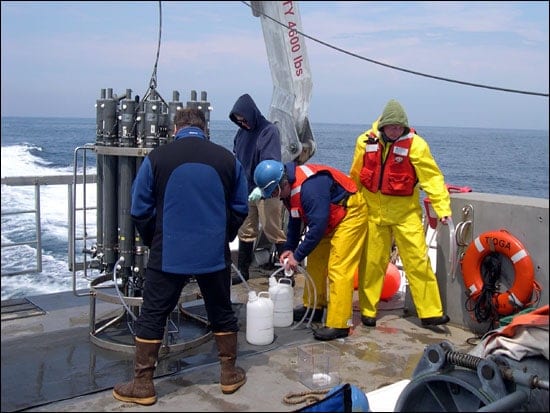Blooms of a Different Sort
June 1, 2005
Commonly called “red tides,” harmful algal blooms, or HABs, are an abundance or “bloom” of single-celled marine algae called phytoplankton that grow and multiply under the right conditions. Among the thousands of phytoplankton species, most are harmless and only a few dozen are known to be toxic. Coastal waters around the world have experienced an increase in the number and type of HAB events over the last several decades. In the United States virtually every coastal state is threatened, in some cases by more than one species. The causes of this trend are unknown, but possibilities range from natural process like species dispersal via storms and currents, to human-related causes like agricultural run-off, nutrient enrichment from wastewater and agriculture, and transport of algal species by ship ballast water. Woods Hole Oceanographic Institution (WHOI) scientists are conducting a variety of HAB projects supported by the National Science Foundation and NOAA’s National Ocean Service through its Center for Sponsored Coastal Ocean Research. The researchers are seeking ways to better monitor the events, share data more quickly with state and local officials given public health concerns, and develop new techniques and technologies to reduce the impact of HABs on marine life and coastal communities. Learn more at The Harmful Algae page.

